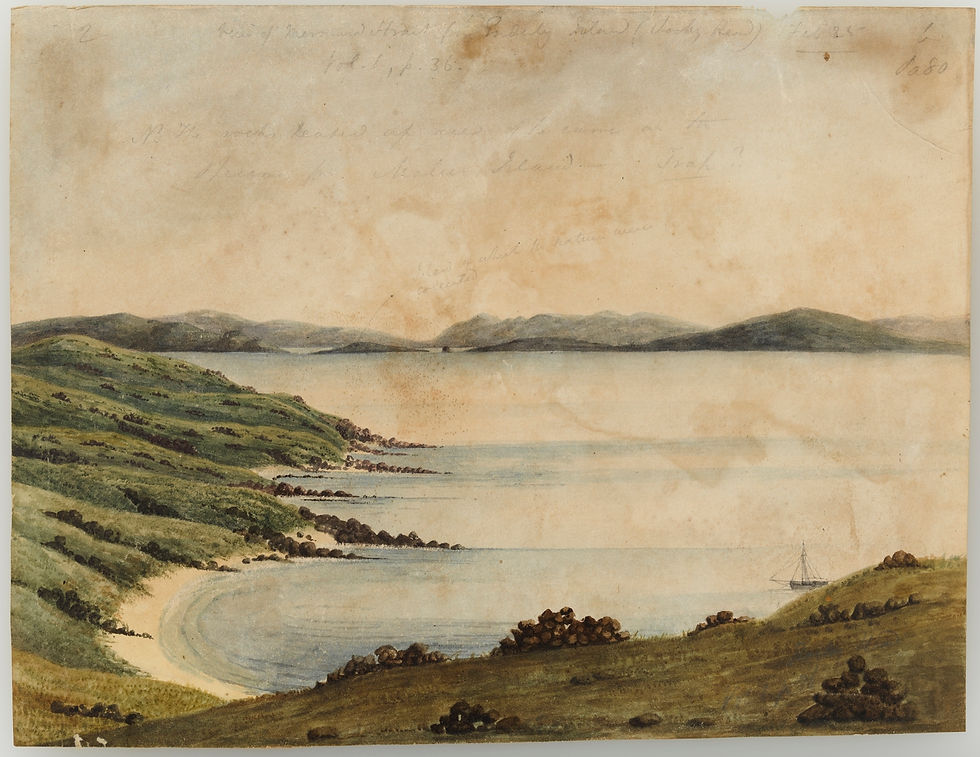

Alistair Paterson, Tom Gara, Jo McDonald
From the seventeenth century Murujuga became known to the world, first entering onto maps of maritime explorers. From the 1860s, the Dampier Archipelago became a significant part of the colonial world. For Yaburara and Mardudunhera people, this colonisation spiralled into violence - culminating in the 1868 Flying Foam Massacre.
Historical accounts and ethnohistorical records significantly augment the archaeological record and complement our understanding of the historical events at Murujuga.
But these accounts also omit and obscure aspects of this history, in particular the ways in which colonial settlement and invasion operated against Yaburara people.
Our understanding of island life has been dramatically restrained by the horrors of massacre and disease.

Records detail a wide range of weapons, implements and ornaments from the Pilbara, and these and museum collections, augment our interpretation of rock art depictions.
We understand better the ways that people moved between the islands on simple watercraft.
And how important spinifex was in the production of fibrecraft for terrestrial and maritime hunting (with pervasive evidence for processing across the archipelago).
We also understand the importance of stone structures for shelter and fishing.
Today, some of the myths of Aboriginal life can be discarded Murujuga people were active ‘salt water’ people on the islands well after contact and massacre.
The grim realities of colonial world however remain a stark fault line, and a legacy for our contemporary communities to continually recognise.

Click on each photo to learn more
All photographs within this monograph were taken by CRAR+M researchers, partners and students, and have been given cultural approval for publication by Murujuga Aboriginal Corporation. Future use of imagery would require additional permissions from Murujuga Aboriginal Corporation and CRAR+M.
© 2023. This work is licensed under a



















